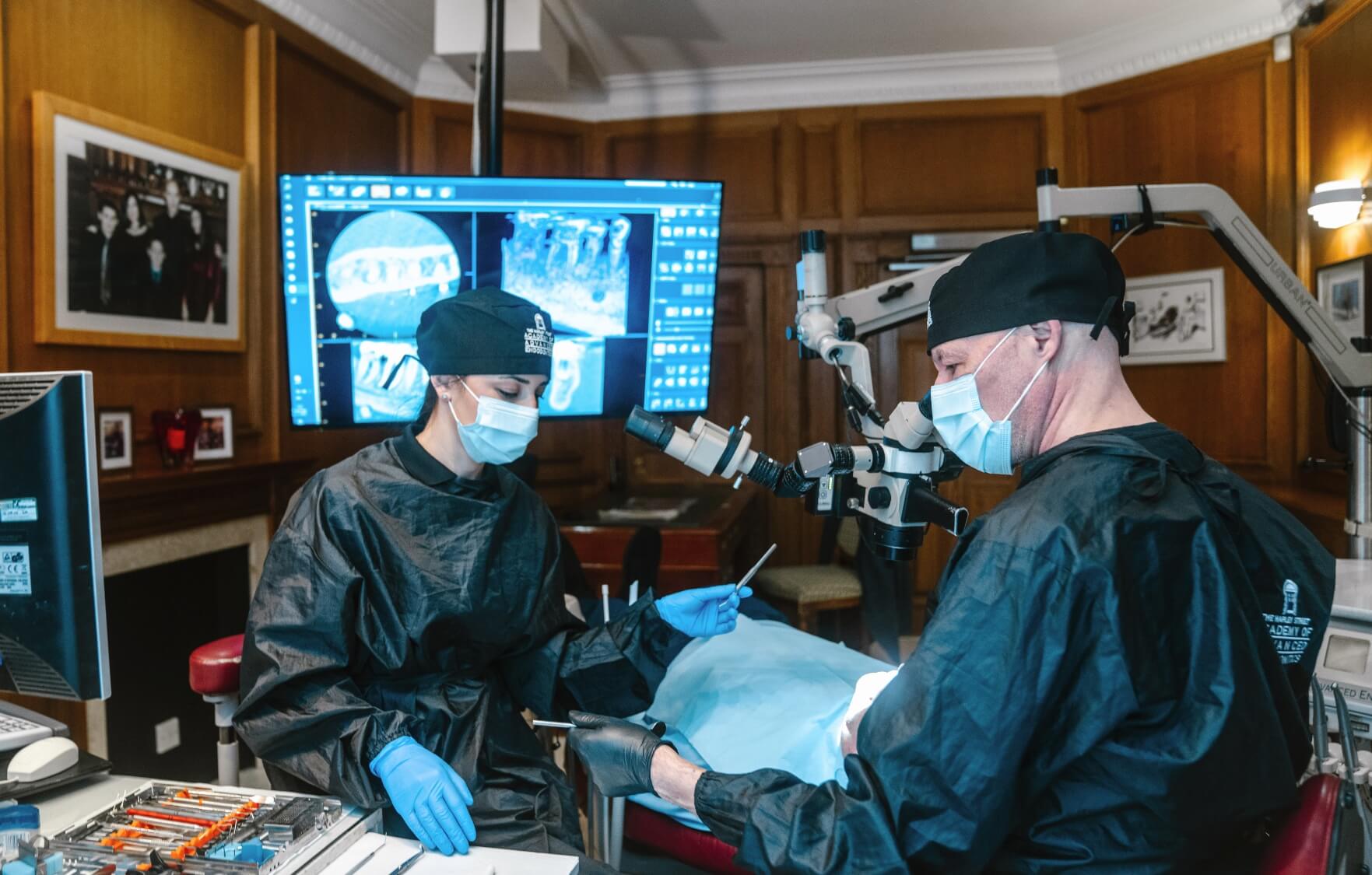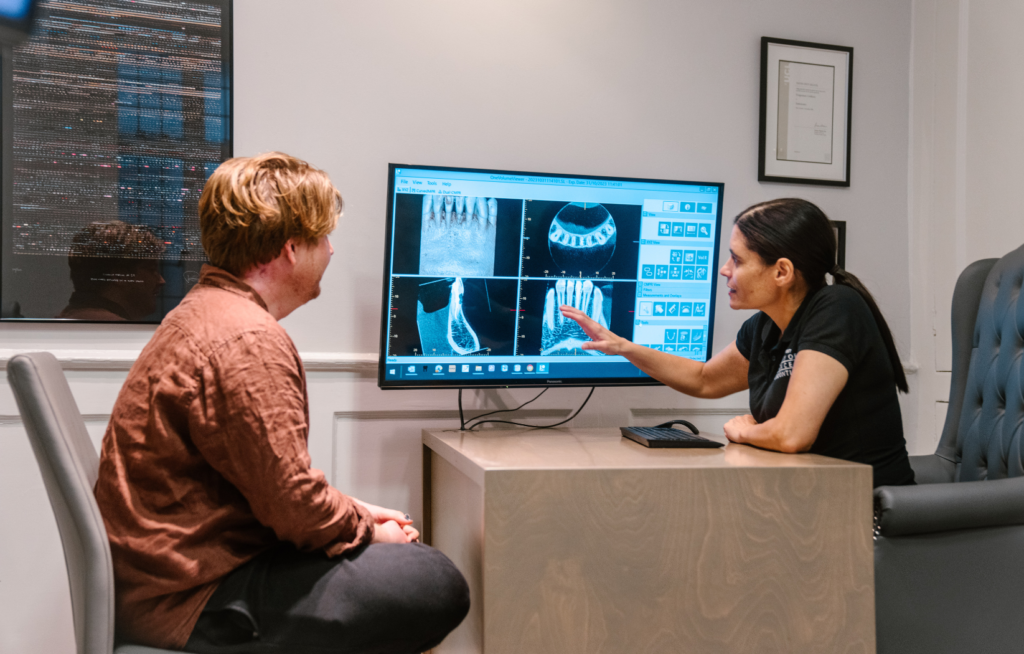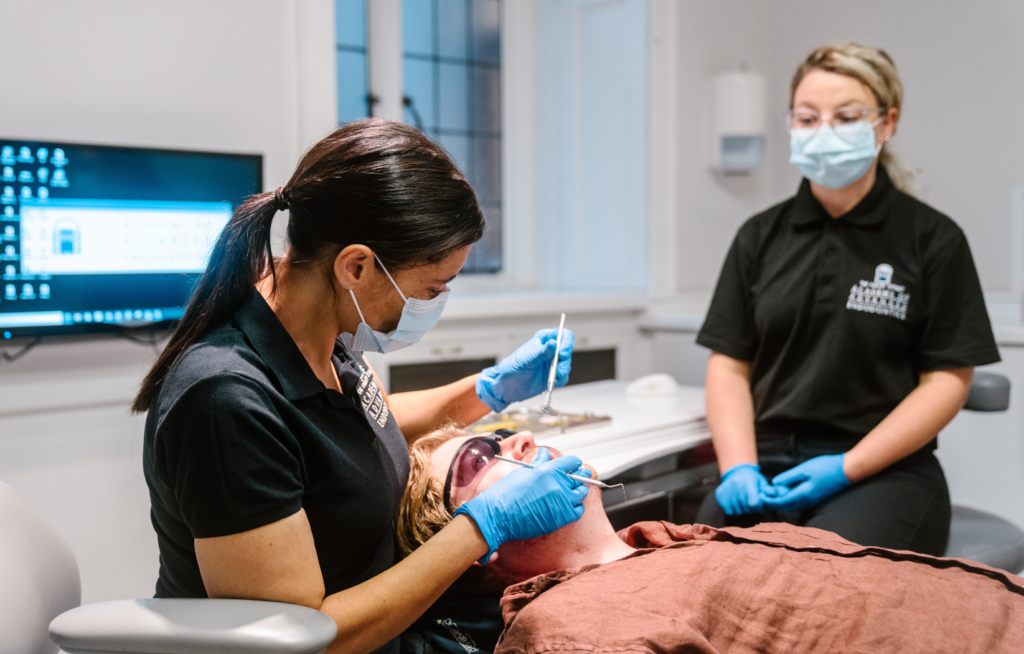
Article Summary
→ Root canal treatment involves removing damaged pulp tissue from the centre of the tooth before filling and sealing it.
→ Root canal is essential for saving teeth with pulp damage and ensuring proper oral function.
→ There are three stages of root canal:
1) Diagnosis and Planning.
2) Cleaning and Shaping
3) Filling and Sealing
→ It is best to choose a root canal specialist for high chances of success and increased comfort.
Introduction
Root canal treatment often conjures images of discomfort and anxiety, but with advancements in dental technology and techniques, this perception is rapidly changing.
Root canal treatment is essential for saving teeth that might otherwise be lost to infection or decay.
Understanding the stages of this treatment can demystify the process, alleviate fears, and highlight the importance of seeking expert care.
In this blog, we’ll walk you through these stages, explaining how a specialist’s involvement combined with cutting-edge technology can turn a once-dreaded procedure into a pain-free, tooth-saving experience.
Understanding Root Canal Treatment
Before we dive into the stages of root canal treatment, it’s important to understand what a root canal is, and to do that we need to understand the anatomy of the tooth.
Our teeth are made up of two primary sections – a crown and a root.
The Crown:
The visible part of a tooth is called the ‘crown’ and is made up of two parts:
- Enamel – This is the protective outer layer of each tooth. Enamel helps shield your teeth from cavity-causing bacteria. Enamel is the hardest substance in the human body.
- Dentine – Just underneath your enamel, there’s a layer of dentine. Dentine isn’t as strong as enamel and when missing enamel exposes dentine, your risk for cavities increases.
When a person requires a standard filling, it is only the enamel and dentine which will have experienced decay.
The Root:
The invisible part is called the ‘root’ – the part of the tooth that holds it in your jaw. You can’t see the root because your gums cover it.
The root anchors the tooth into the bone of the jaw. A soft tissue covers the root called the periodontal ligament. This tissue contains pressure receptors that measure forces placed on the tooth, protecting the jaw and teeth from damaging high forces.
This is a major difference from a dental implant, which is screwed directly into the bone without any protective elements.
Beneath these layers of enamel and dentine lies the pulp, the innermost part of the tooth, which contains nerves, blood vessels and connective tissues.
The pulp is responsible for the original formation of the tooth and provides the tooth with protection against decay and fractures with ultra-sensitive sensors.
The pulp runs through the root canals, which are complex channels inside the root. The pulp exits the root at the end of the tooth to join the blood vessels and nerve fibres that run through the jaw, connecting the tooth to the brain.
So, if decay or a crack spreads through the enamel and dentine and reaches the pulp in the root, you may well require root canal treatment – because the innermost pulp of your tooth will be damaged.
A damaged pulp will die and then become infected by bacteria from the mouth entering the pulp spaces and root canals. The reaction to this process beneath the tooth in the bone of the jaw is called an abscess.
Root canal treatment involves removing the damaged area of the tooth (the pulp), cleaning and disinfecting it, then filling and sealing it to prevent further decay or infection from entering the tooth.
This treatment is crucial for preserving natural teeth, allowing individuals to maintain their natural smiles and avoid the need for extractions and costly implants, which can degrade bone mass.
→ Read Our Full Blog: ‘What is a Root Canal’

Stages of Root Canal Treatment
Stage 1: Diagnosis and Planning
The first stage of root canal treatment is critical and involves thorough diagnosis and meticulous planning.
This stage sets the foundation for a successful procedure by accurately identifying the problem with the tooth and determining the best course of action.
Diagnosis:
At the Endo Academy, our specialists begin with a comprehensive investigation, including detailed dental history, visual inspection for signs of cracked, decayed or broken teeth/fillings and special tests to identify symptoms such as sensitivity to temperature, tooth discolouration and gum swelling.
We use advanced imaging techniques, including digital X-rays, intra-oral scans and cone beam computed tomography (CBCT) scans, to get a detailed view of the teeth’s structure and the extent of the infection.
This allows us to diagnose with precision then come up with strategies to try to save the tooth. This is discussed and we will then tailor the treatment to each patient’s specific needs.
(explore our technology)
Planning:
Once the diagnosis is confirmed, we meticulously plan the root canal procedure.
Our planning process considers the complexity of the root canal system, the presence of any previous restorations, root canal treatments and the overall health of the surrounding tissue.

By combining all the information gathered from our advanced diagnostic technology, we’re able to plan the entire process digitally, leading to much greater success rates.
We discuss the treatment plan with our patients, explaining the procedure, the expected outcomes and any potential risks.
This stage is crucial for setting patient expectations and ensuring they are fully informed and comfortable before proceeding, for one cannot give consent without complete understanding.
(read this blog about proper patient communication)
Stage 2: Cleaning and Shaping
After a thorough diagnosis and meticulous planning, the next step in the root canal process is cleaning and shaping the canal system.
This stage is vital for removing the infected tissue and preparing the root canals for the final filling and sealing.
Cleaning:
The primary goal of this phase is to remove all of the dying or dead and infected pulp material from the root canal system.
This can be done using manual tools and instruments, but we prefer to use specialised instruments and advanced techniques to ensure thorough cleaning.

This includes the use of super-fine files to carefully open up pathways through the root canals so that disinfecting chemicals like sodium hypochlorite can get into the canals and work their magic.
Our use of laser-assisted irrigation technology allows for deeper penetration of these chemicals, ensuring meticulous disinfection of even the most complex root canal systems, reducing damage and weakening of the tooth.
Shaping:
We need to widen the root canals to allow for effective cleaning and sealing.
Not so long ago the width required to do this effectively was quite large and relatively destructive to the tooth. This would weaken and make them more susceptible to breakage over time.
In 2024 we can employ both advanced laser irrigation and newer bioceramic sealers with exceptional flow characteristics – significantly reducing the size of the shape preparation.
We leverage the latest in endodontic technology: a computerised drill with an electronic apex locator that gives us a precise location for the end of the root, and torque sensing that automatically adjusts the rotation of the super-elastic files to ensure precise, safe and efficient shaping.
This not only improves the effectiveness of the treatment and improves safety but also significantly reduces the patient’s chair time.
The cleaning and shaping stage is critical for the success of the root canal treatment.
Stage 3: Filling and Sealing
After the meticulous cleaning and shaping of the root canal, we arrive at the final and crucial stage: filling and sealing. This step is pivotal in ensuring the long-term success of the root canal treatment.
We need to prevent any future bacterial invasion or food from entering the canal system.
This is particularly important because food particles will allow for any surviving bacteria within the canal system to multiply, as we are unable to eliminate all bacteria completely. These tiny amounts of bacteria are entombed inside the tooth and cause no damage.
The canals are sealed with a central core of a rubber material called ‘gutta percha’ and a fine outer layer of bioceramic cement, which forms a solid hermetic and antibacterial seal that also encourages bone healing.
This sealing process is critical to block all pathways between the tooth and its surrounding tissues, effectively safeguarding against reinfection.
The final step involves restoring the tooth with a crown or filling. This is not just about aesthetics; it’s about restoring the tooth’s functionality and strength.
We will usually provide a permanent filling to seal off the root canal system. Root-treated teeth are weaker than standard teeth and back teeth will frequently require some kind of a crown to protect them against high chewing forces.
For this final stage, our specialists will refer you back to your general dentist or a specialist restorative dentist to ensure that the external restoration perfectly complements the internal treatment.

A Summary of the Stages
To summarise these stages again:
Stage 1 – Diagnosis and Planning: The first step is all about understanding the problem. Using advanced diagnostic tools, we accurately identify the extent of the infection. This stage sets the foundation for a successful treatment by meticulously planning the approach tailored to each patient’s needs.
Stage 2 – Cleaning and Shaping the Canal: Next, the infected tissue is removed and the canal/s is/are cleaned and shaped. This stage is critical for eliminating bacteria and preparing the canal for the filling material.
Stage 3 – Filling and Sealing the Canal: The final stage involves filling the cleaned canal with a biocompatible material, usually gutta-percha and a bioceramic cement, then sealing it to prevent future infections before applying a crown. This step is vital for the long-term success of the treatment, ensuring the tooth remains healthy and functional.

Our Approach
At the Endo Academy, our approach to root canal treatment is defined by a blend of compassion, innovation and precision.
We understand that the thought of a root canal can be daunting for many patients, which is why we prioritise clear communication and patient comfort throughout the process.
Our clinic, in the heart of London’s prestigious Harley Street medical district, is equipped with the latest in endodontic technology, including cone beam computed tomography (CBCT) scanners and advanced operating microscopes. This allows us to diagnose and treat with unparalleled accuracy.
Our team of specialists, led by renowned endodontists Dr Richard S Kahan and Dr David Z Selouk, are not just experts in their field; they are passionate educators committed to patient care.
We take the time to explain each stage of the treatment, ensuring our patients are fully informed and comfortable with the process.
Our use of minimally invasive techniques and the latest materials, like bioceramic sealers, ensures optimal outcomes with minimal discomfort.

In Conclusion
Understanding the stages of root canal treatment demystifies the process, alleviating the anxiety associated with this common dental procedure.
If you’re experiencing dental pain or have been advised to consider a root canal, we encourage you to consult your general practitioner or reach out to us directly for advice.